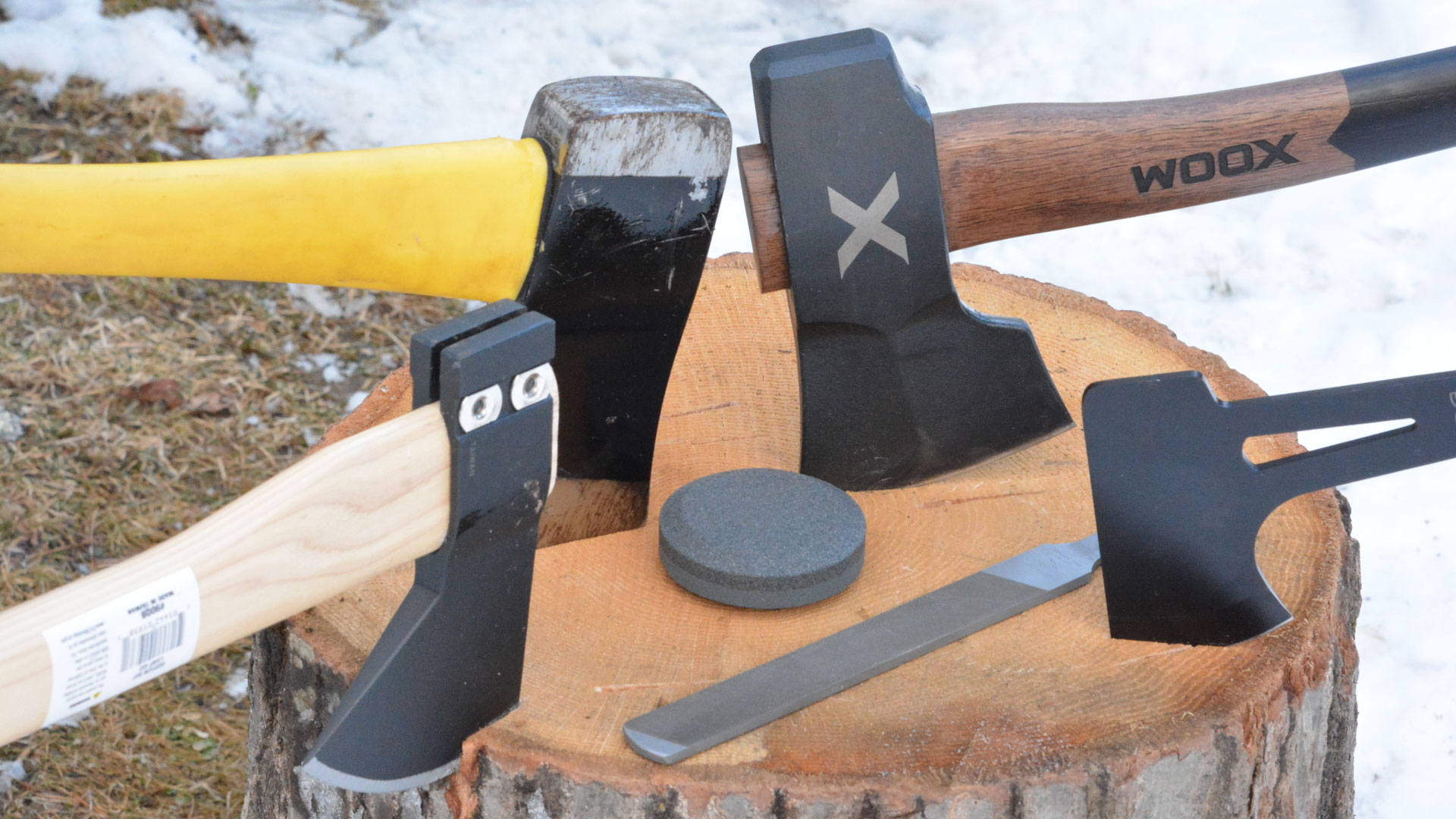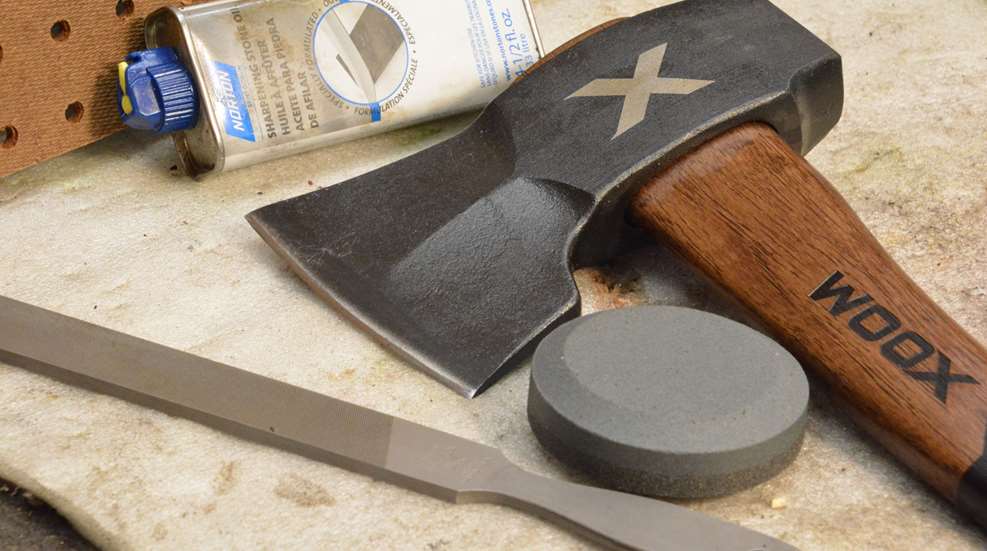
The axe might well be one of the first complex tools used by man. I have stood on the coast of northern Australia and held in my hand a prehistoric stone axe that I found there. The ancient aborigine who made the axe head fitted it with a handle and perhaps used it to cut trees, or maybe as a weapon. Other than that it was terribly dull, and not really that much different than the axes we used today. If I traveled back in time and handed that aboriginal my hatchet or axe, he would instinctively know what it was used for.
The axe has played a huge part in modern history. Western expansion would have been impossible without the use of an axe. You can be sure that every covered wagon had at least one on board.
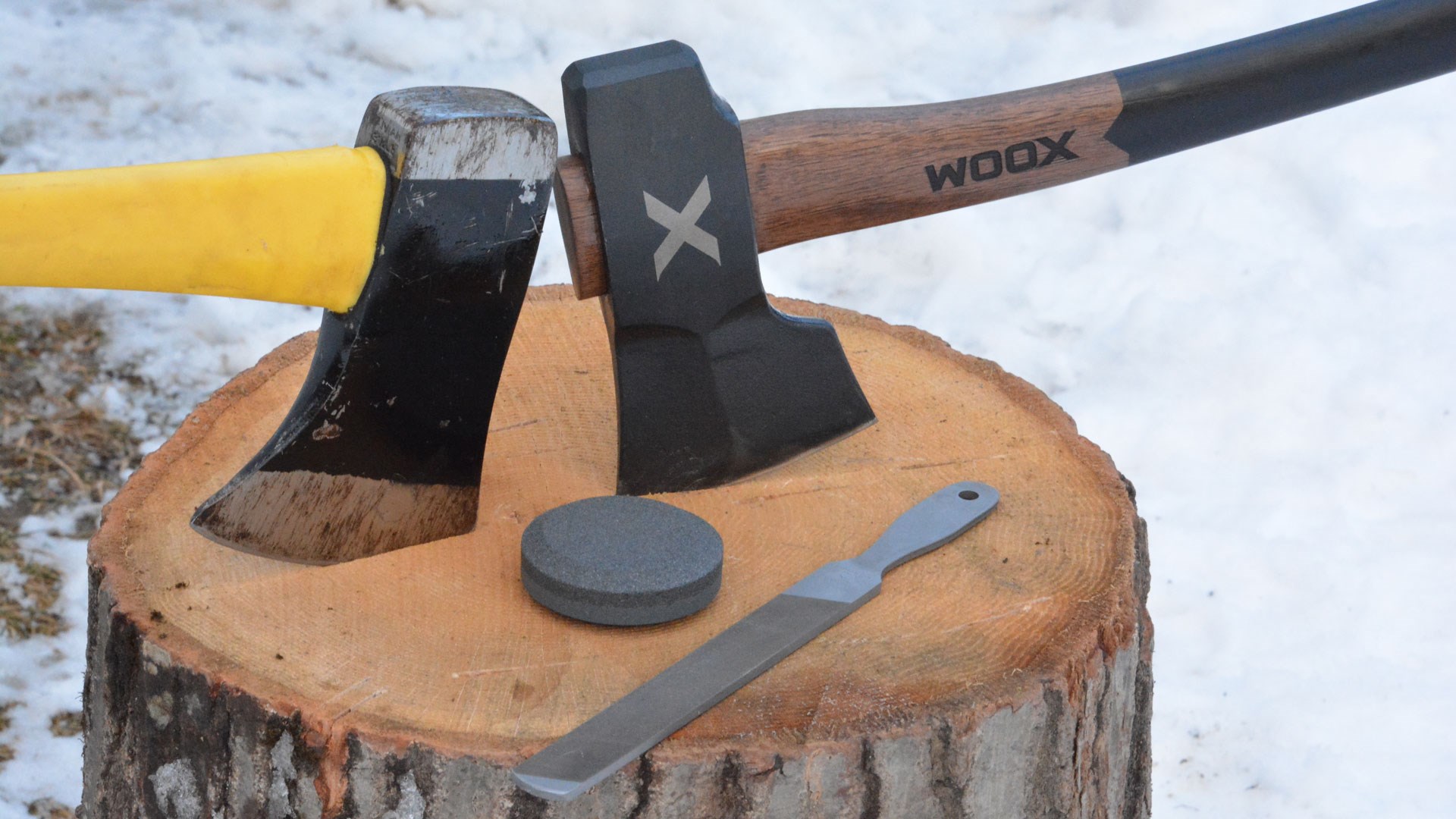
Today’s modern hunter doesn’t seem to use an axe as much. I’ve seen one by the wood pile in a few camps, rusty and dull, but that’s about it. Still, it’s one of the most useful tools a hunter can have. I always have an axe in my truck toolbox, and I can’t even begin to remember how often that has been useful. Just a while ago I tried to get to our family deer camp after a windstorm and there were trees across the road. A chain saw would have been better, but I didn’t have a chain saw, I had an axe. I still managed to clear the road. Just in the past few years, I have also used that axe to cut through the rib cage of an elk, clear shooting lanes for a deer stand and to split wood for the fire at bear camp.
Some folks claim a dull axe is better for splitting wood. I doubt that, but I do know it’s a bad idea to do anything else with a dull axe. A dull axe is a dangerous tool. It can fail to bite into the wood, glance off and damage or remove parts of your leg or foot. Particularly if the user is not versed in technique and is not using a proper stance. That’s a topic for another time though. Today let’s talk about the lost art of sharpening an axe.
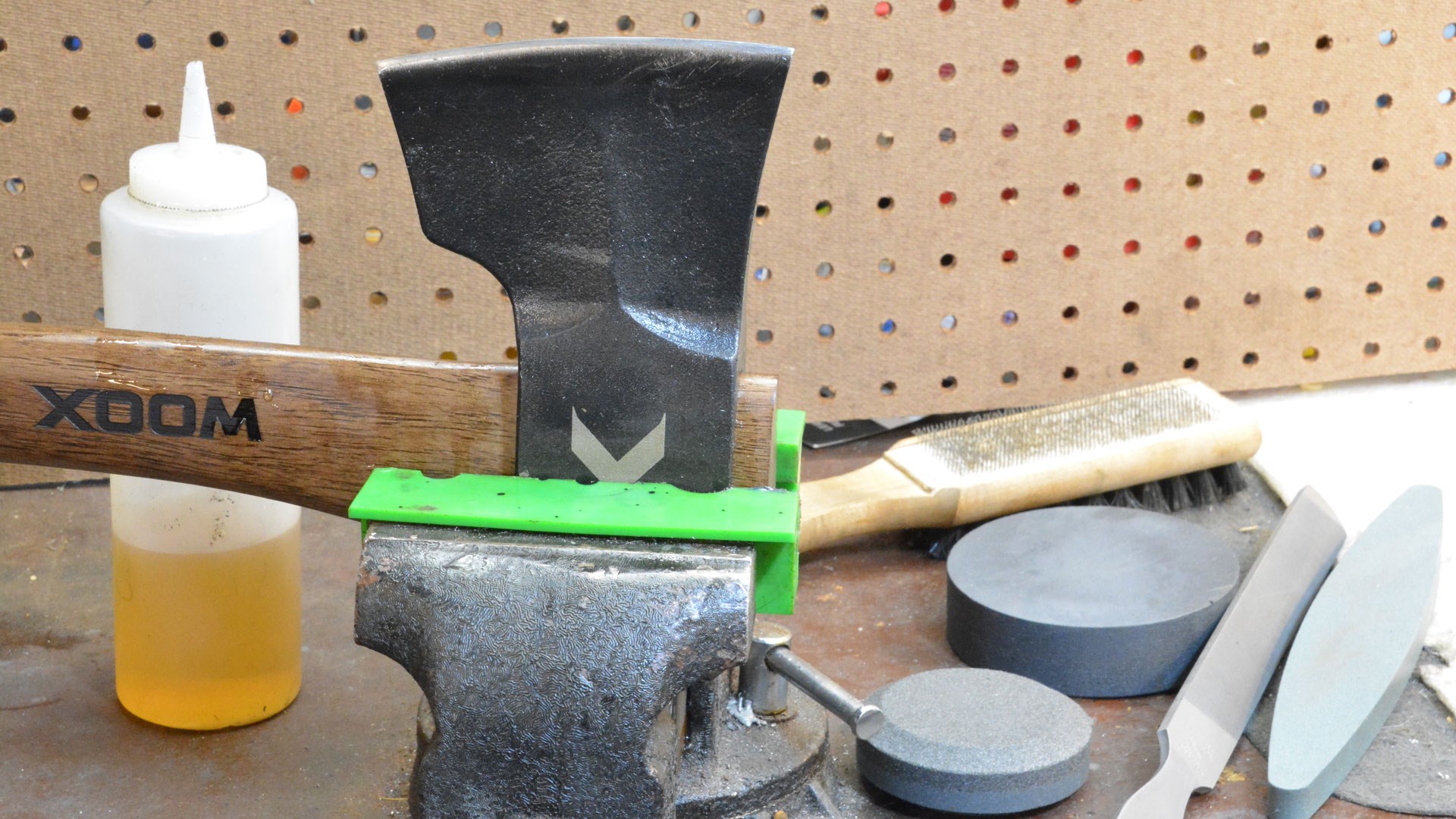
It can be done freehand, but it is much better if you clamp the axe head in a vise. The other tools you will need are a file and a sharpening stone—perhaps a couple of sharpening stones.
Most any file will work, but life is better if you buy an axe file made specifically for this job. Mine was $12 online. The eight-inch file is double-cut on one side for rapid removal and reshaping of the metal, and single cut on the other side for the finish work.
The easiest way to do this is to follow the angle already on the blade. Some sources recommend thinning the blade and using a lower angle. I suppose there is some merit in this if the axe is used exclusively for cutting wood. But, when I read in a bushcraft book recently about doing that, the guy said it would take about a day per axe, so I made an executive decision to stay with the original angle.
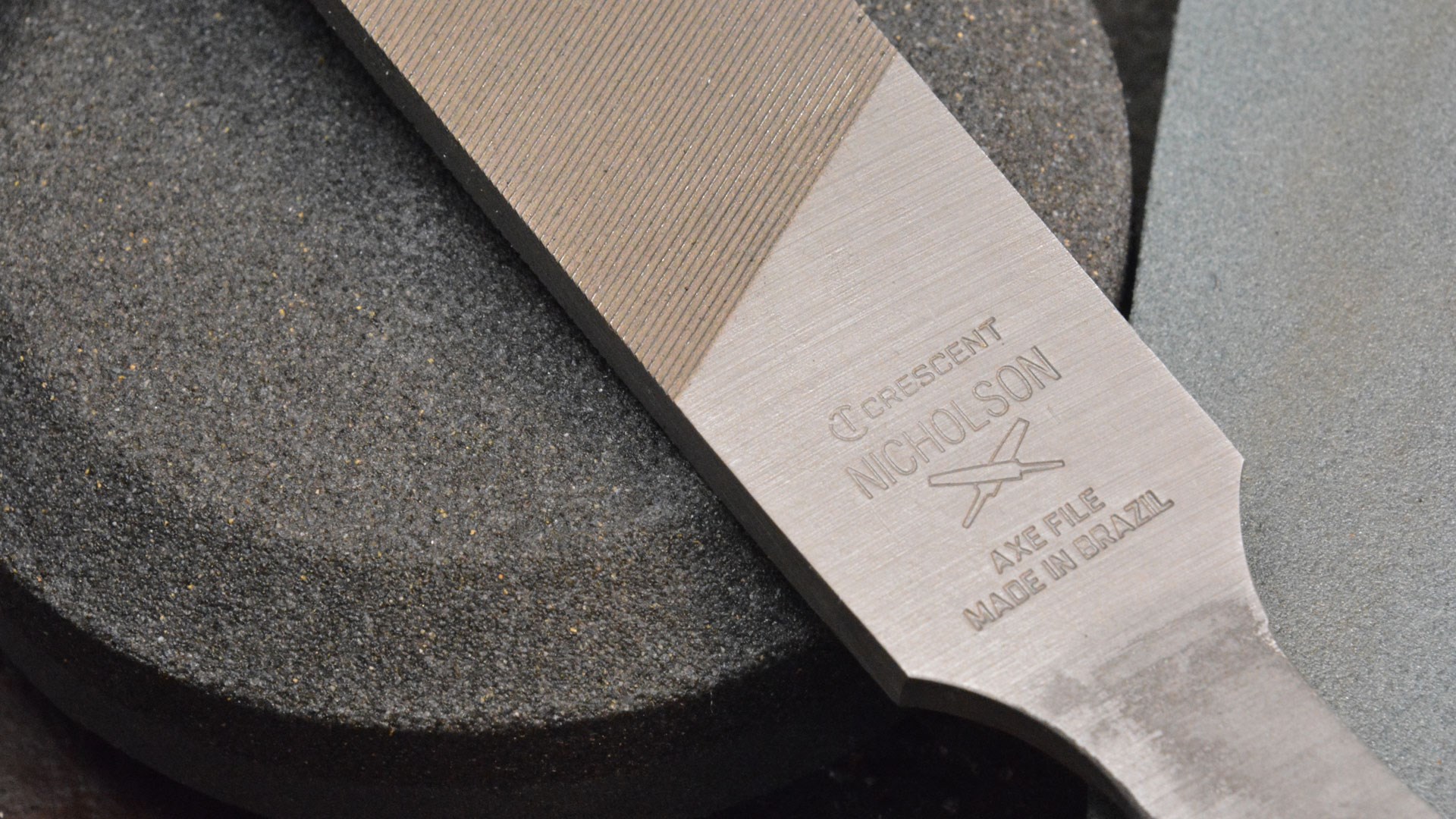
Watch the edge as you file and you will see the metal change color. That will illustrate where the file is cutting. File in a forward direction only, do not drag the file back and forth on the blade as it will dull the file. Adjust the angle of the file until it is cutting on the entire bevel on the front of the axe blade. That means you are at the correct angle and are cutting to the edge, which is important.
Flip the axe and do the same on the other side. Be careful to file the same amount on each side so that you keep the cutting edge in line with the center of the axe head. Count your strokes if you are in doubt.
If the axe is dull or damaged, it may take a while to file the edge back to where it belongs. If a chip is very deep, you may decide to leave it rather than file off a lot of the axe head, but it’s best, when possible, to use the file until you have a nice clean cutting edge.
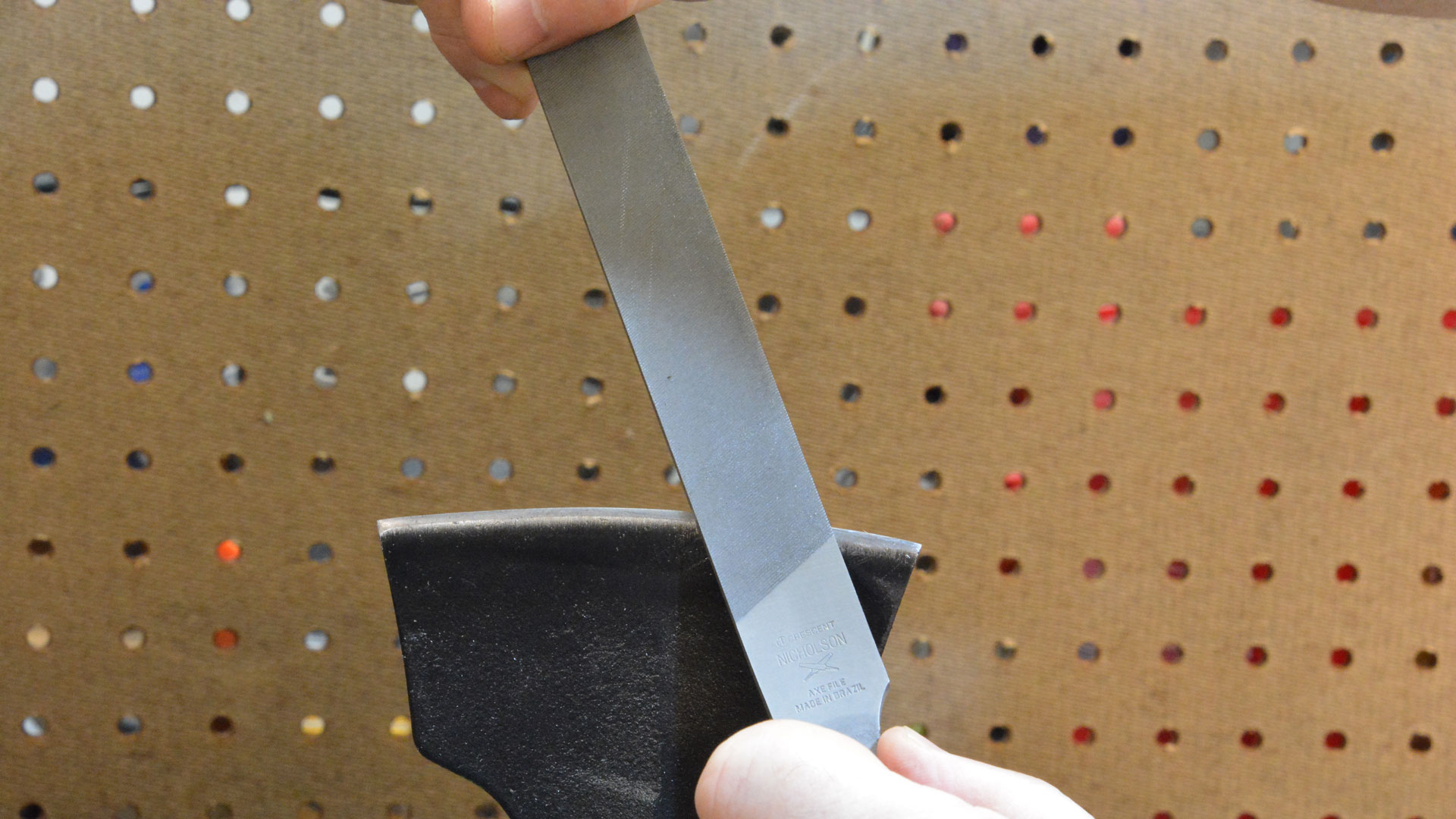
Finish with a few light strokes on each side. This should result in a sharp edge. You can probably get by just fine with the edge created by the file, but it’s never a bad idea to make it even sharper.
The next step is to use a sharpening stone. Stay away from carborundum (silicon carbide) stones as they wear and lose their flatness. Aluminum oxide or natural stones are a better choice.
Be advised that axe steel is not the same as high-quality knife steel, and some axes can be a bit finicky with the final edge. Just as you are getting that keen edge you have been working for, it rolls and the fine edge is lost. The key is to be careful with the stone angle and pressure. With attention to technique you can produce a great edge, but I am confident that along the way you will learn some new swear words.
Use plenty of oil on the stone. Honing oil or mineral oil work best. Motor oil is not a very good choice as it’s too heavy. You want the oil to lift the microscopic pieces of steel and float them away. Light oil works best for this. Water is a poor second choice and the old way of spitting on the stone is just foolish. You want to protect your investment in the stone, so use the correct oil.
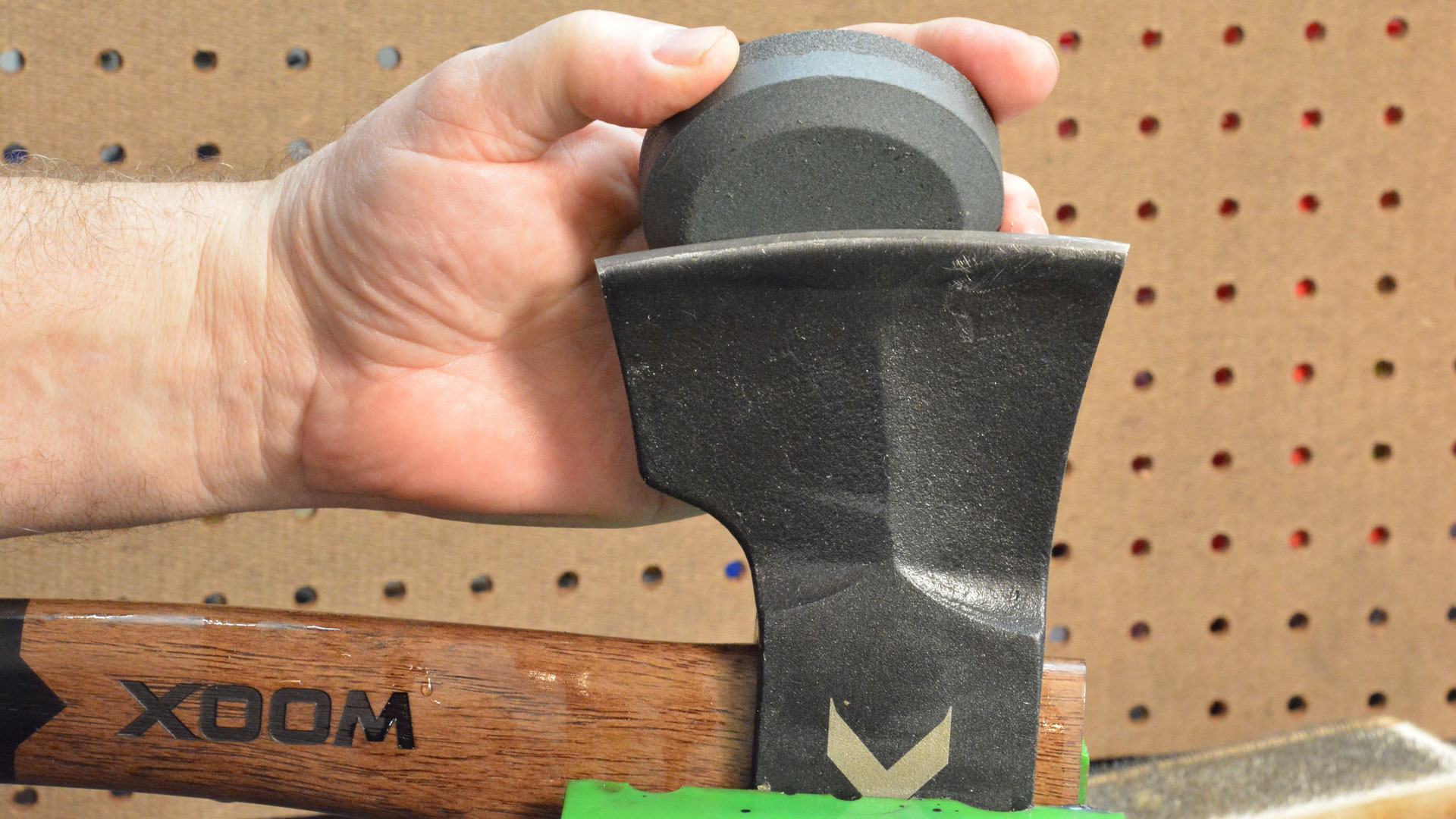
Most axe sharpening stones are shaped like a hockey puck. They usually have two grits, course on one side and medium on the other. Start with the course side first and work the edge with a circular motion, making sure to keep plenty of oil on the surface of the stone. Because the ax blade is curved you must be careful to maintain the correct stone angle as you work back and forth along the cutting edge. Watch the bevel and you will see it change color as the surface is honed by the stone. You may need to wipe it clean now and then with a paper towel. Make sure that the stone is cutting all the way to the edge of the axe. Work both sides, swapping back and forth.
Switch to the medium stone and repeat. Watch the slurry on the stone and you will see the edge scraping the oil ahead of it like a snow plow. That’s how you know you are working the edge properly. Don’t angle the stone more to do this, but maintain the angle on the bevel. That keeps the edge angled like it is taking a very thin slice off the stone.
Finish with the last few strokes using a lighter touch, and a linear rather than circular motion. This should produce a very sharp edge on the axe. For a general use ax, I stop here. However, I have a few small hatchets that I often use like an Ulu knife for processing game, cutting meat, shaping wood or other more delicate work. For those blades I switch to a Hard Arkansas bench stone and polish the edge with this fine stone.
Done correctly, this can produce an edge on any axe that you could use to shave with. I don’t recommend that you do. I have seen photos of old mountain men shaving with an axe, but they were tougher than we are.
